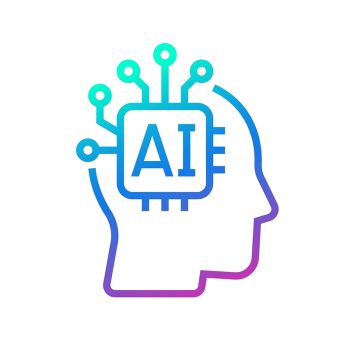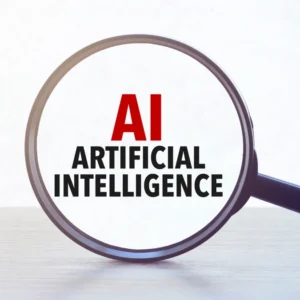Throughout history, new tools have often led to panicky speculation. Socrates warned that reading and writing would have disastrous effects on memory. Once upon a time, parents lamented that books, which kept their children sitting indoors, were a detriment to their physical health. The novel, the telegraph, the telephone, and the television were each declared to be the “end of civilization as we know it”.
Winston Churchill once said, “Now this is not the end. It is not even the beginning of the end. But it is, perhaps, the end of the beginning”. As AI becomes more advanced and accessible, it has shown its potential to radically transform how nonprofits operate, helping them to boost efficiency and optimize fundraising. As with all new technology, the promise of increased efficiency certainly comes with both risks and rewards. In this article I discuss the current state of AI, and ways in which AI is being adopted and utilized by nonprofit organizations.
Current State
In general terms, AI systems work by ingesting large amounts of data and analyzing it for correlations and patterns, then using these patterns to make predictions about future states. A recent study conducted by unite.ai found that 89% of nonprofit organizations believe that AI will improve efficiency, but only 28% say they currently use it. This low adoption rate is not surprising as the practical uses of AI are still being developed. But even in its infancy, AI provides a variety of useful tools and benefits.
How AI is Helping, and Can Help, Nonprofits
1. Screening and Predicting Donor Behavior
AI analyzes data to screen prospective donors, provide segmentation and create predictive models about their behavior. Inputting AI data about past and potential donors assists nonprofits to identify new donor sources, gauge how much they are likely to give, and offer strategies for engagement. AI tools can also help analyze strategic donor profiles to suggest personalized engagement techniques such as A/B testing for different segments of donors, thus refining outreach strategies continuously. AI creates personalized emails and pitch letters by analyzing the organization’s information and data on previous and potential donors.
2. Automating Routine Tasks
AI automates routine tasks, freeing up time to focus on more important work and critical tasks while reducing the risk of human error. Examples include reviewing and updating donor prospect profiles, reading, and responding to incoming communications, and sending internal and external reminders.
3. Managing Communications, Social Media Engagement & Programmatic Support
Generative AI learns patterns and structures in order to generate text, images, media, marketing copy, newsletters, and other communication material. Generative AI tools such as ChatGPT, Bard, and Bing generate draft press releases, social media posts, marketing copy, newsletters, and other communications material. AI-powered social media management tools can be used to analyze social media trends, write post text, image captions, and hashtags, and monitor engagement on multiple platforms.
4. Managing Data and Evaluating Outcomes; Operational Support
AI-powered customer relationship management software and its analytic capabilities enable nonprofits to identify the most effective interventions and optimize resources. For example, AI can analyze financial data and make suggestions for budgetary planning. AI tools also make the process of managing data “at scale” a lot easier. AI is useful in evaluating programs, analyzing data to identify program outcomes, assess effectiveness, understand sentiment around the programs, and identify potential improvements.
5. Customer Service
Chatbots can handle inbound queries and requests, simulating human conversation by using natural language processing. These interactive AI assistants mimic human conversation and offer pop-up assistance to the user on a nonprofit’s website. This provides customer service and resources 24/7. AI provides “predictive analytics” by analyzing patterns of donor and website visitor behavior.
6. Evaluating Programs
AI helps organizations evaluate programs by analyzing output data to identify program outcomes, assess effectiveness, understand sentiment around the programs, and identify potential improvements. Nonprofits can then use these insights to make programming more efficient and effective for those who participate.
7. Fraud Detection; Internal Controls
AI can help nonprofits protect financial transactions and sensitive donor information. For example, AI can analyze workflows and access privileges to ensure that authorized users’ duties and controls remain separate to prevent fraud. Similarly, it can automatically alert decision-makers when someone requests approval for a transaction. AI tools can be programmed to monitor suspicious activities or notice language that may indicate fraudulent activities in emails, chat logs, or submitted forms.
AI is Here to Stay
It’s a certainty that AI is here to stay, and its impact on how we live and work will be transformational. In my next article, I will provide high-level considerations that organizations should address prior to adopting AI on a broad level. I’ll recommend best practices to adopt when employing AI, as well as a few “don’ts” for its use. Stay tuned!
- Jon Dartleyhttps://perlmanandperlman.com/author/jondartley/
- Jon Dartleyhttps://perlmanandperlman.com/author/jondartley/
- Jon Dartleyhttps://perlmanandperlman.com/author/jondartley/
- Jon Dartleyhttps://perlmanandperlman.com/author/jondartley/









